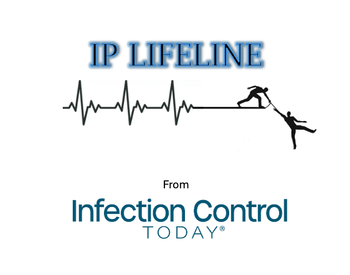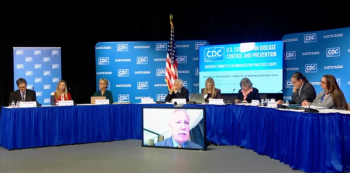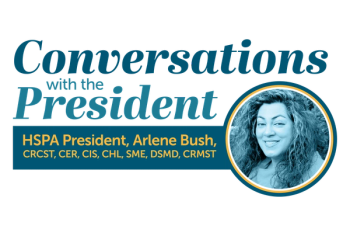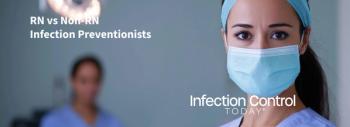
Empowering Patient Health: What Should Patients and Caregivers Know About Staying Healthy While in the Hospital
Oral care is vital in reducing hospital-acquired pneumonia risks. Health care workers' education, evidence-based protocols, and accessible supplies enhance patient outcomes and prevent complications in health care settings.
Background
Due to the increased complexity of hospital settings, patients may experience care delays, errors, and complications, including infections. Hospital-acquired pneumonia (HAP) is the most common hospital-acquired infection in the US.1 The definition of HAP is not present on admission with an onset greater than 48 hours after admission to the hospital.2 The majority of HAPs occur in nonventilated patients. Non-ventilator hospital-acquired pneumonia (NV-HAP) accounts for approximately 65% of all HAP events.1 NV-HAP has a greater risk of mortality and the need for mechanical ventilation, as well as an increased length of stay of 16 days compared to 4.4 days for those without NV-HAP.3
Hospital-acquired pneumonia is a major concern for patients during hospitalization.1 Regardless of hospital unit, anyone can be susceptible to developing HAP.4
Causative factors
One of the risk factors contributing to the development of pneumonia is found in the oral cavity. The mouth is a reservoir for harmful bacteria.5 Oral microbiota is composed of over 700 bacterial species.5 There is also a more significant increase in dental biofilm for people with decreased mobility, frailty, and dementia.6 Studies show that the biofilm on the teeth begins to form within as little as 4 hours.7
One study found the most common microorganism in the mouth was Escherichia coli (E coli), followed by Pseudomonas, Candida albicans, and Staphylococcus aureus.7 In this study, the authors found organisms from community-onset and early colonization within 48 hours of hospital admission.7 Therefore, it is difficult to tell if colonization occurred before or during hospital admission. Thus, there is a need to focus on mitigating the risk factors of pneumonia in the community and health care facilities.
Pneumonia is not the only concern related to poor oral care; periodontal disease can also lead to endocarditis, cardiovascular disease, and stroke.8
Oral care
Oral care can help address a risk factor associated with dental caries, gingivitis, and periodontal disease.9 In the hospital setting, comprehensive oral care is imperative to mitigate the risk factors of HAP and other adverse conditions.10 Oral care addresses the modifiable risk factors of HAP–dental plaque, bacterial colonization, and the aspiration of secretions in hospitalized patients.10 Without comprehensive oral care, plaque builds on the teeth. It is a breeding ground for harmful bacteria that can be aspirated into the lungs.10
A study on enhanced oral care interventions in a large medical center with 8,709 patients found if oral care frequency increased from a mean of 0.95 to 2.25 times per day, there would be an 85% reduction in the NV-HAP incidence rate.11 The odds of developing NV-HAP were 7.1 times higher in the medical control versus intervention units.11 Additionally, surgical patients with increased oral care had a 56% reduction in the NV-HAP incidence rate.11
Best Nursing Practice
A comprehensive approach to oral care is the best strategy to mitigate the risk of developing pneumonia (Table 1). Oral care should be addressed with hospitalized patients in health care facilities and the community, especially with the elderly. Prevention strategies, a comprehensive oral care program, and mobility are imperative to address the risk factors of pneumonia.12
According to the American Dental Association (ADA), able patients should brush their teeth with a soft-bristled toothbrush two to four times a day and use an antiseptic mouth rinse, sodium bicarbonate or fluoride toothpaste, and a non-petroleum-based mouth moisturizer.13 Those unable to complete their own care will need additional nursing support and supplies to ensure appropriate oral care is completed.
Nurses and infection preventionists play a vital role in preventing HAP. Foundational practices, such as regular oral care, are essential aspects of care to address nosocomial infections. Additionally, it is important to maintain nutrition and mobility in addition to oral care to prevent adverse complications.12
Unfortunately, oral health is often given a low priority among nursing tasks and is typically thought of as ‘hygiene and comfort.’ However, nurses and patients alike must understand the essential intervention oral care plays in addressing the risk factors of HAP. A study on missed nursing care activities found a significant opportunity for nurses with oral care; the authors found that 60.5% of patients who developed NV-HAP had no documented oral care.14
Developing an effective program
Any change implementation that aims to improve patient outcomes must consider people, products, and processes.
People:
To provide the best patient care, nurses and other health care clinicians must understand the risks and essential care required. Appropriate training for nurses, as well as unlicensed assistance, is imperative .Consideration must be given to determine if everyone has the training, knowledge, and skills. Educate staff to ensure they are knowledgeable about and able to deliver appropriate oral care and understand the link between oral microbes and pneumonia. Patient and family education is also important to highlight the vital link oral care can play in addressing the risk factors of HAP.
Product:
Appropriate product availability is essential for patient care in any health care setting. One aspect to consider when choosing products is making it easy to provide comprehensive care. For example, having all products packaged together in one location, rather than the need to choose four products from different locations, helps promote workflow efficiency. To help with this, Stryker Sage offers comprehensive non-vent and vent oral care packaged-in systems.* Having product available in the room at admission is also helpful. Another strategy would be to use reminder signs at the bedside or in the bathrooms to remind patients and clinicians of the importance of oral care.
Process:
Nurses are critical in facilitating best practices by implementing evidence-based nursing practices. The CDC recommends developing written non-ventilated and ventilated protocols and/or standard procedures to standardize and ensure oral care is provided.15 Successful implementation of bundles to address the risk factors can result in positive patient outcomes, improved safety, and significant cost savings.4
As you begin implementing oral care, baseline audits can help demonstrate the need for improvements in process and outcomes. While tracking compliance data, it is important to focus on improvements and provide positive feedback to maintain a successful program. Celebrate successes along the way! A simple but often overlooked way to keep nursing staff engaged is to congratulate and thank them when oral care is incorporated into their daily practice and when targets are reached.
Another resource to leverage when creating a sustainable program is the electronic health record (EHR) system. Leveraging your EHR system’s prompts can help drive practice and ensure clear documentation. It is also helpful to conduct audits of EHR documentation to monitor oral care delivery and identify barriers to providing and documenting oral care.
Summary
Oral care is imperative to addressing the risk factors associated with pneumonia.10 Nurses and other health care clinicians must be aware of and focused on implementing a sustainable, comprehensive oral care program to address complications and optimize patient outcomes.
References
- Magill SS, O’Leary E, Janelle SJ, et al. Changes in Prevalence of Health Care–Associated Infections in U.S. Hospitals. N Engl J Med. 2018;379(18):1732-1744.
- Anand N, Kollef MH. The Alphabet Soup of Pneumonia: CAP, HAP, HCAP, NHAP, and VAP. Semin Respir Crit Care Med. 2009;30(1):3-9.
- Jones B, Sarvet A, Ying J. Incidence and Outcomes of Non–Ventilator-Associated Hospital-Acquired Pneumonia in 284 US Hospitals Using Electronic Surveillance Criteria. JAMA. 2023;6(5):e2314185.
- Quinn B, Baker D, Cohen S, Stewart JL, Lima CA, Parise C. Basic Nursing Care to Prevent Nonventilator Hospital‐Acquired Pneumonia. J Nurs Scholarsh. 2014;46(1):11-19.
- Howard K, Gonzalez O, Garneau-Tsodikova S. Porphyromonas gingivalis: Where do we stand in our battle against this oral pathogen? RSC Med Chem. 2021;12(5):666-704.
- Ewan V, Newton JL, Rushton S, Walls AW. Oral hygiene of hospitalized older patients with lower limb fracture. Age Ageing. 2016;45(6):887-890.
- Cruz A, Fidelis Y, de Mendonça Guimarães D, et al. Oral health and the presence of infectious microorganisms in hospitalized patients: A preliminary observational study. Ann Med. 2022;54(1):1908-1917.
- Altamura S, Del Pinto R, Pietropaoli D, Ferri C. Oral health as a modifiable risk factor for cardiovascular diseases. Trends Cardiovasc Med. 2024;34(4):267-275. doi:10.1016/j.tcm.2023.03.003.
- About Periodontal (Gum) Disease. Centers for Disease Control and Prevention.
https://www.cdc.gov/oral-health/about/gum-periodontal-disease.html . Published May 15, 2024. Accessed December 2, 2024. - Schleder B, Scott K, Lloyd RC. The Effect of a Comprehensive Oral Care Protocol on Patients at Risk of Ventilator-Associated Pneumonia. J Advocate Health Care. 2002;4(1):27-30.
- Giuliano KK, Penoyer D, Middleton A, Baker D. Original Research: Oral Care as Prevention for Nonventilator Hospital-Acquired Pneumonia: A Four-Unit Cluster Randomized Study. Am J Nurs. 2021;121(6):24-33.
- Klompas M, Branson R, Cawcutt K, et al. Strategies to prevent ventilator-associated pneumonia, ventilator-associated events, and nonventilator hospital-acquired pneumonia in acute-care hospitals: 2022 Update. Infect Control Hosp Epidemiol. 2022;43(6):1-27.
- Quinn B, et al. Non-ventilator health care-associated pneumonia (NV-HAP): Best practices for prevention of NV-HAP. Am J Infect Control. 2020;48(5):A23-A27.
- Tesoro M, Peyser D, Villarente F. A Retrospective Study of Non-Ventilator-Associated Hospital Acquired Pneumonia Incidence and Missed Opportunities for Nursing Care. J Nurs Adm. 2018;48(5):285-291.
- Oral Health in Healthcare Settings to Prevent Pneumonia Toolkit. Centers for Disease Control and Prevention.
https://www.cdc.gov/healthcare-associated-infections/hcp/prevention-healthcare/oral-health-pneumonia-toolkit.html . Published March 27, 2024. Accessed December 2, 2024. - Home Oral Care. American Dental Association.
https://www.ada.org/resources/ada-library/oral-health-topics/home-care/ . Updated August 8, 2024. Accessed December 2, 2024. - Oral Hygiene. National Institute of Dental and Craniofacial Research.
https://www.nidcr.nih.gov/health-info/oral-hygiene . Published December 2024. Accessed December 2, 2024. - Quinn B, Ruble C. Procedure 3 - Endotracheal Tube Care and Oral Care Practices for Ventilated and Non-Ventilated Patients. In: AACN Procedure Manual for Progressive and Critical Care. 8th ed. Elsevier; 2021:35-40.
* Please follow indications for use per product labeling when using Stryker Sage products
Newsletter
Stay prepared and protected with Infection Control Today's newsletter, delivering essential updates, best practices, and expert insights for infection preventionists.






